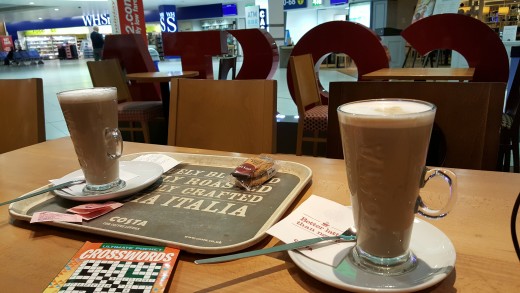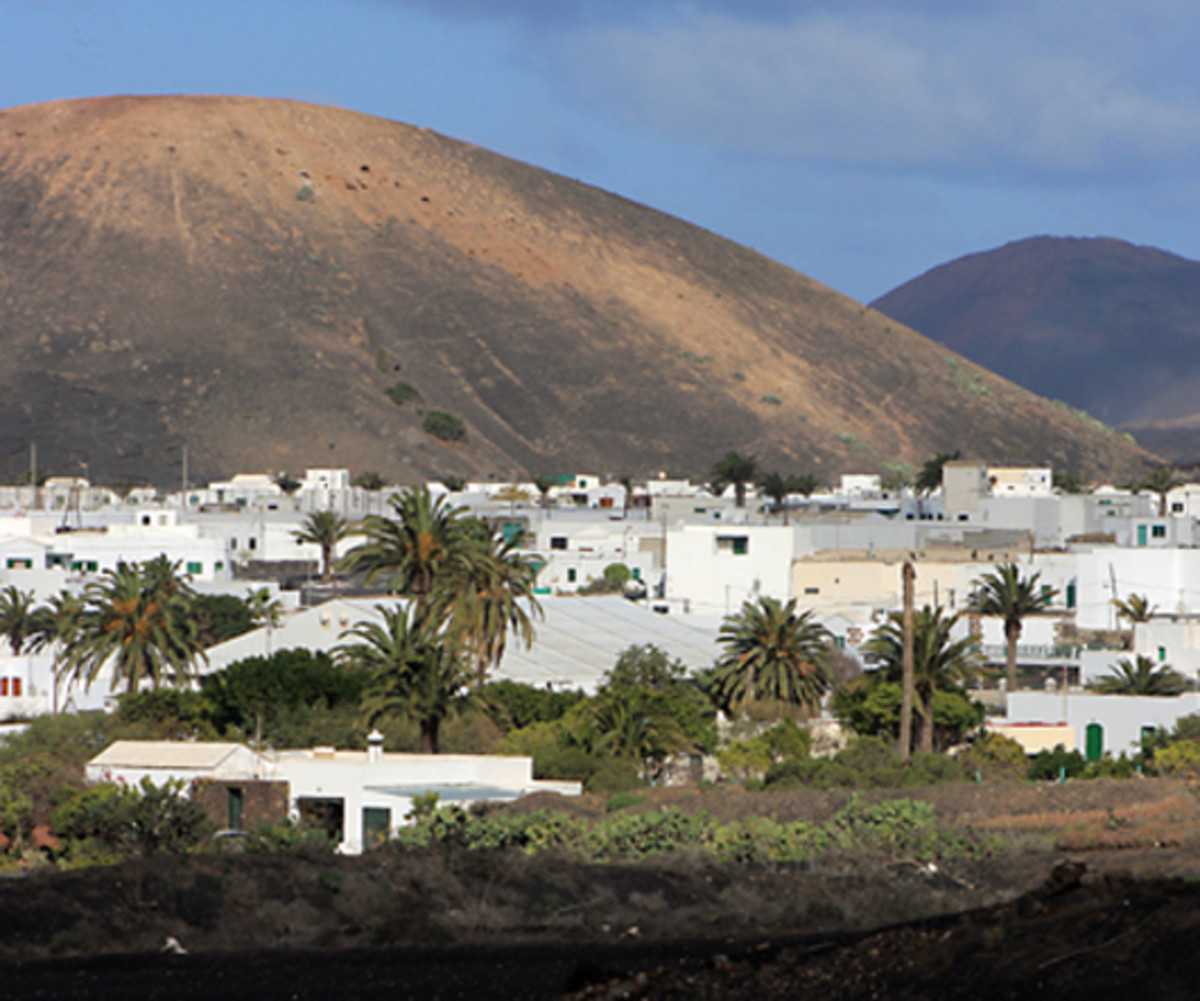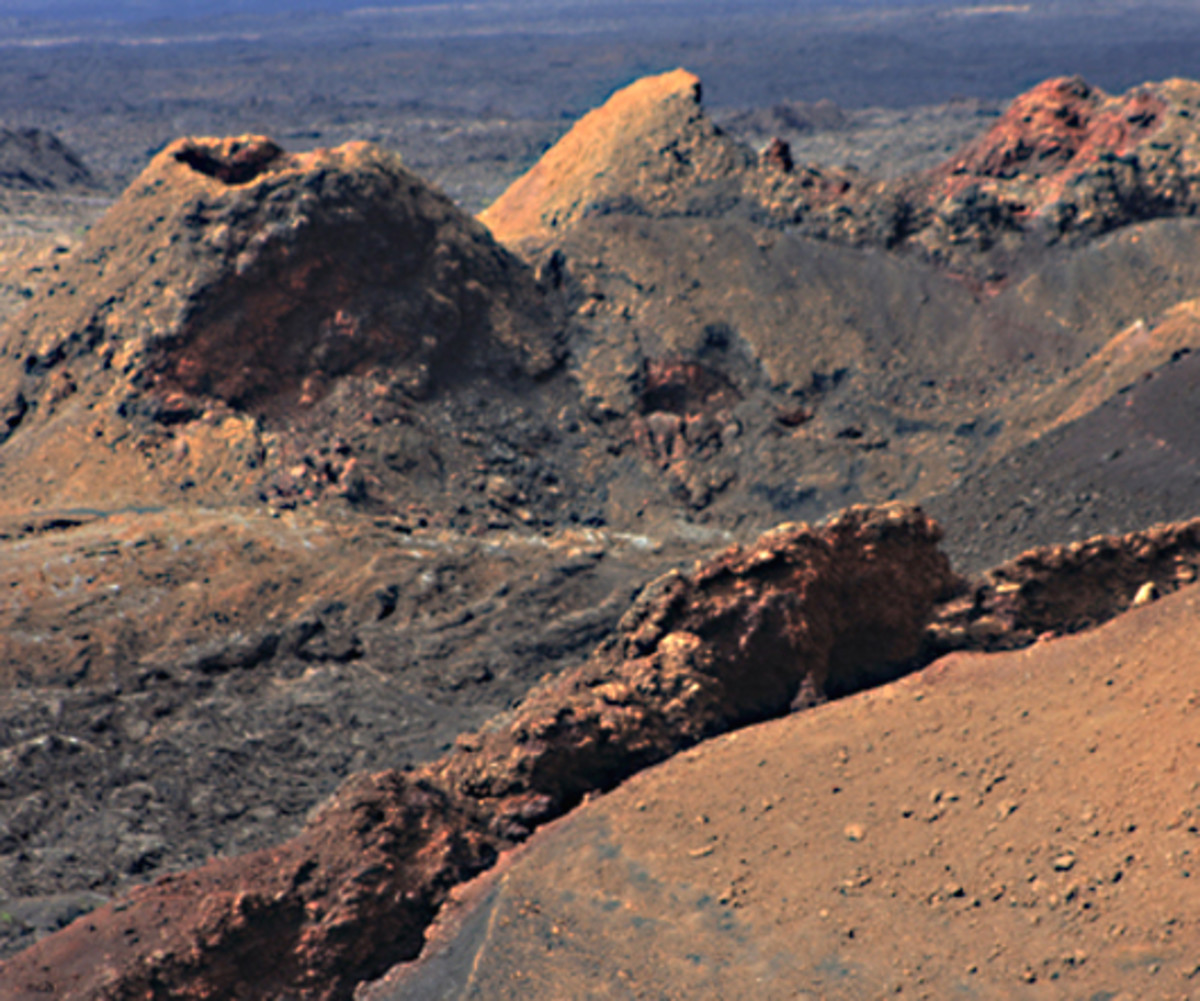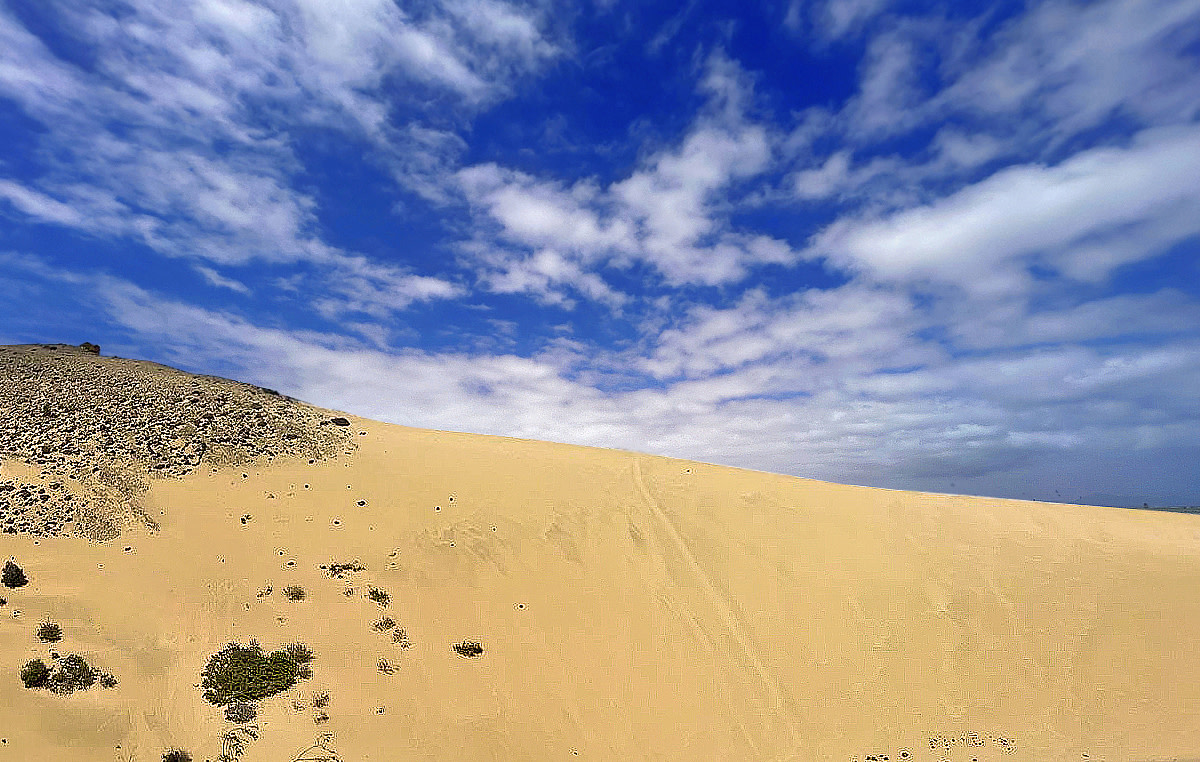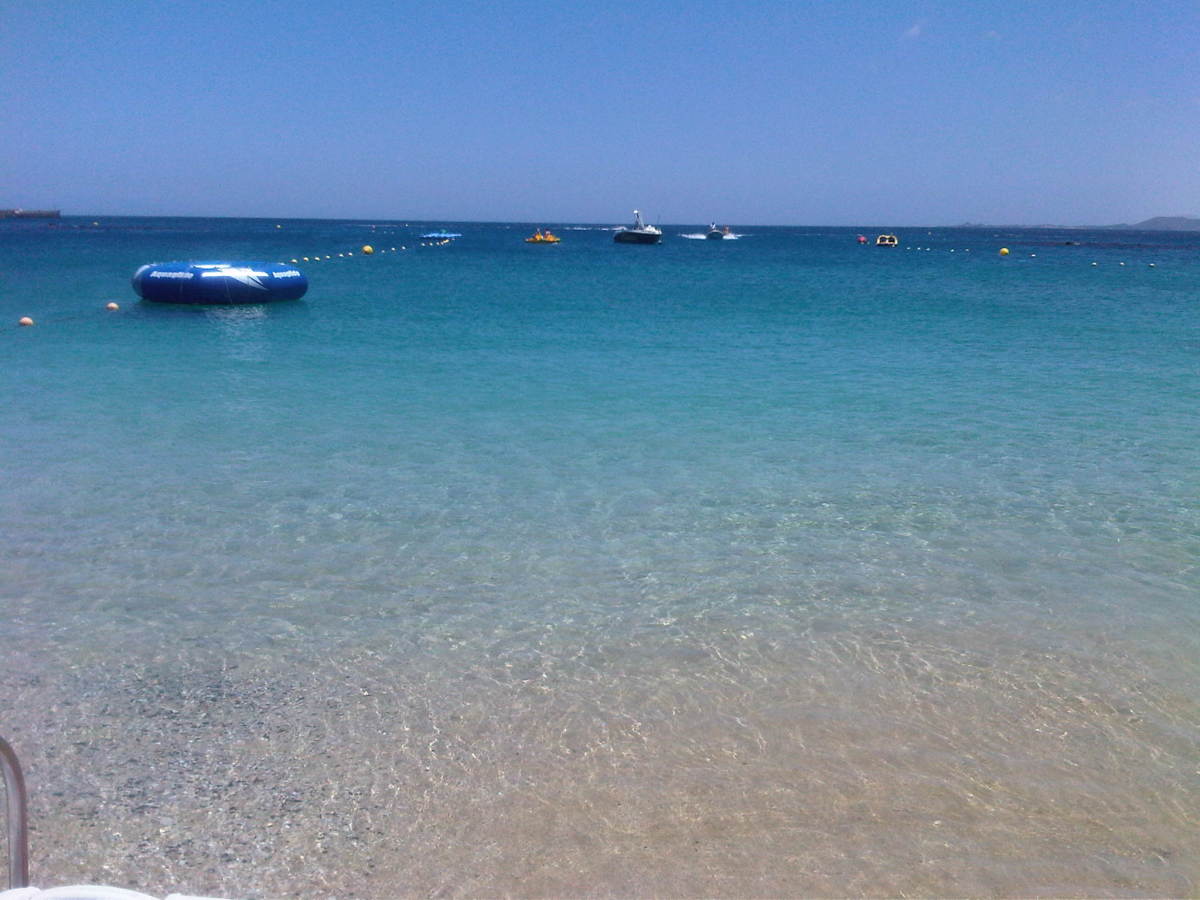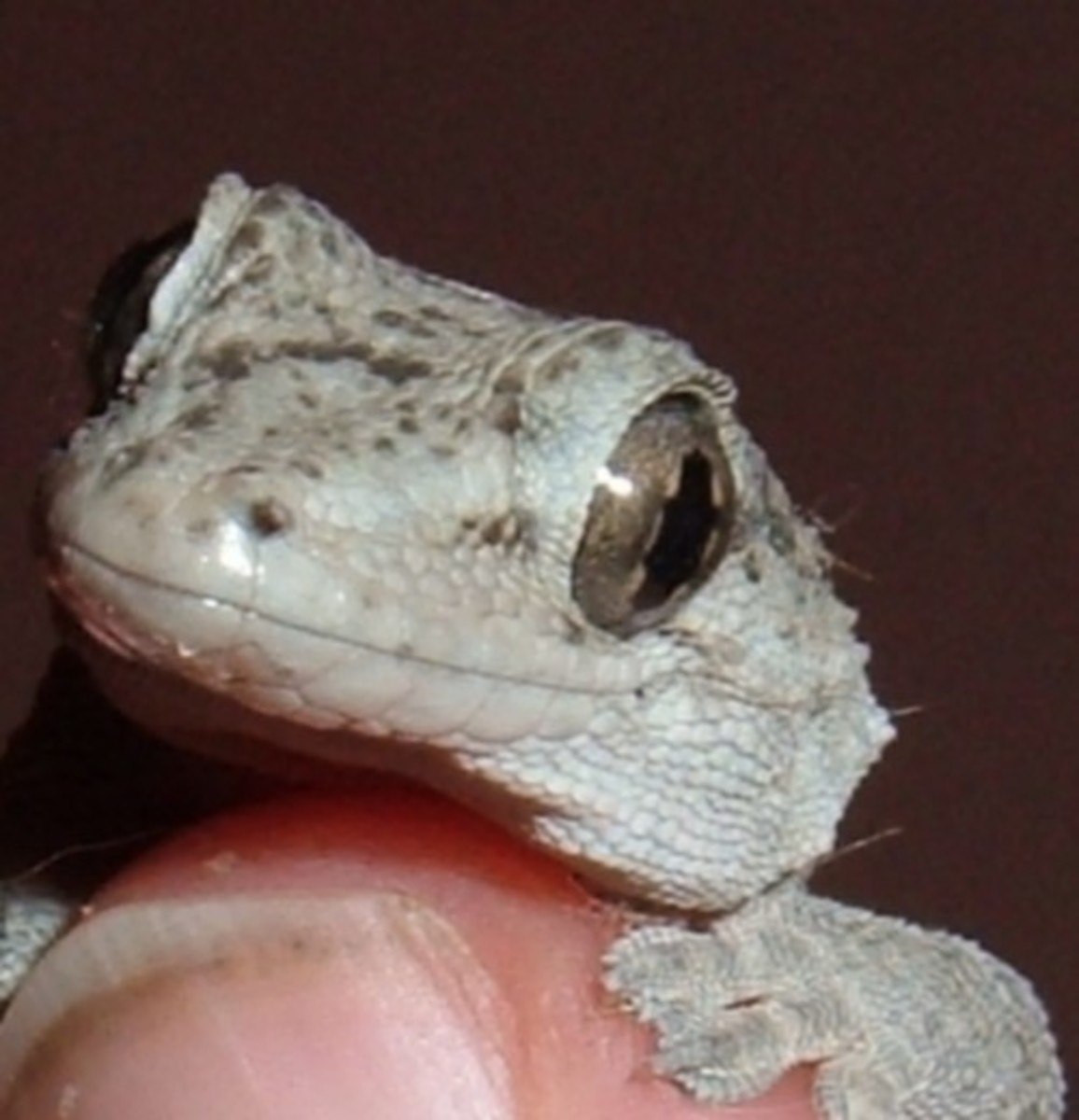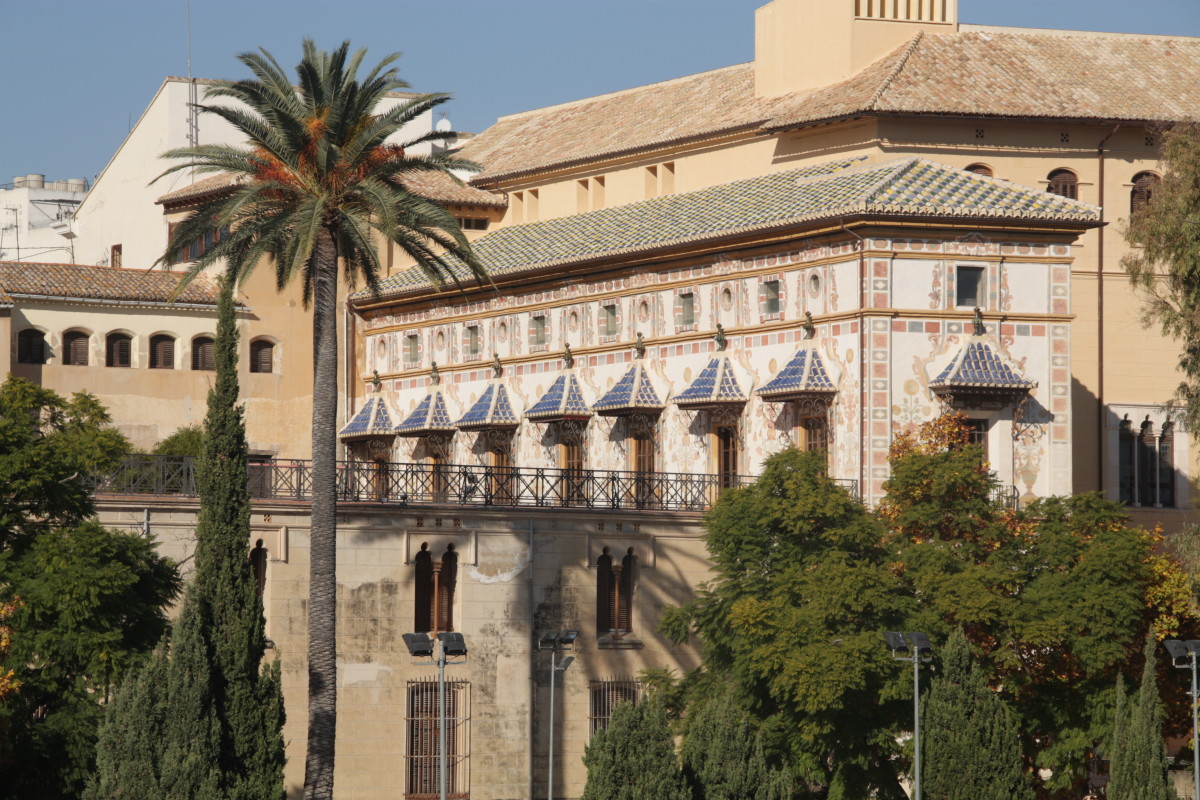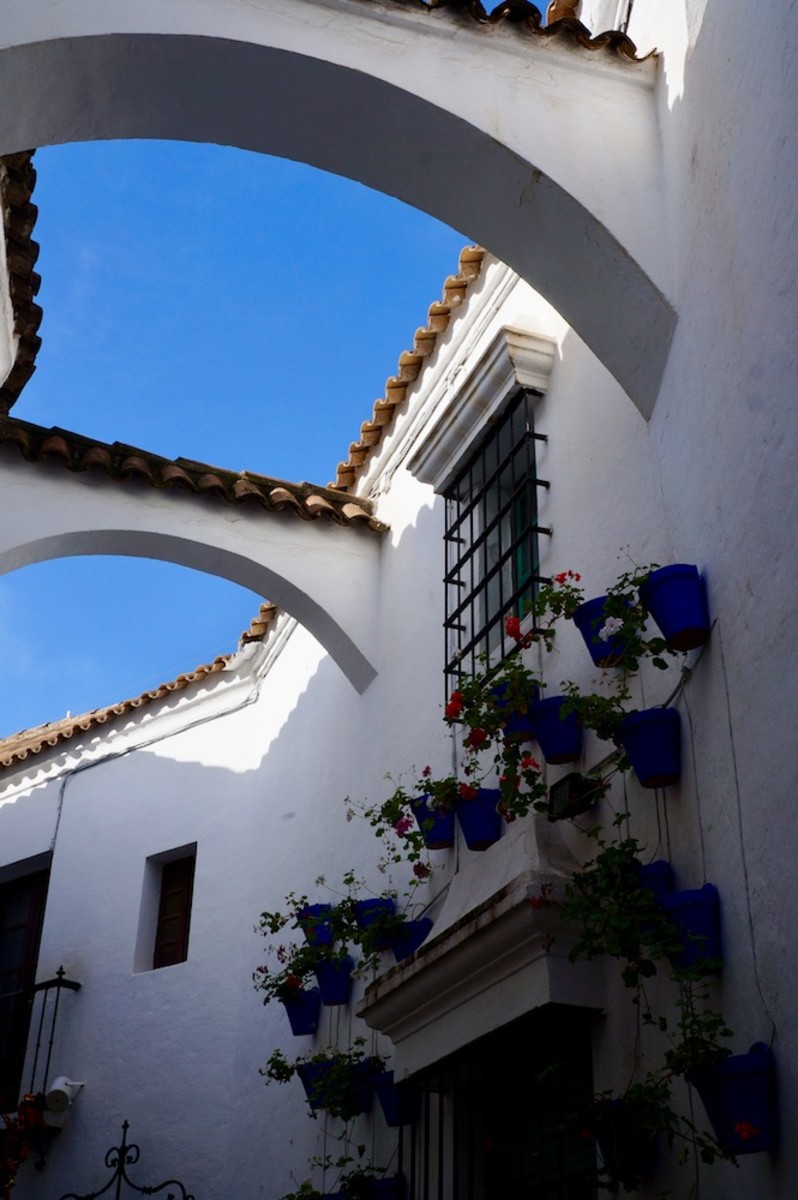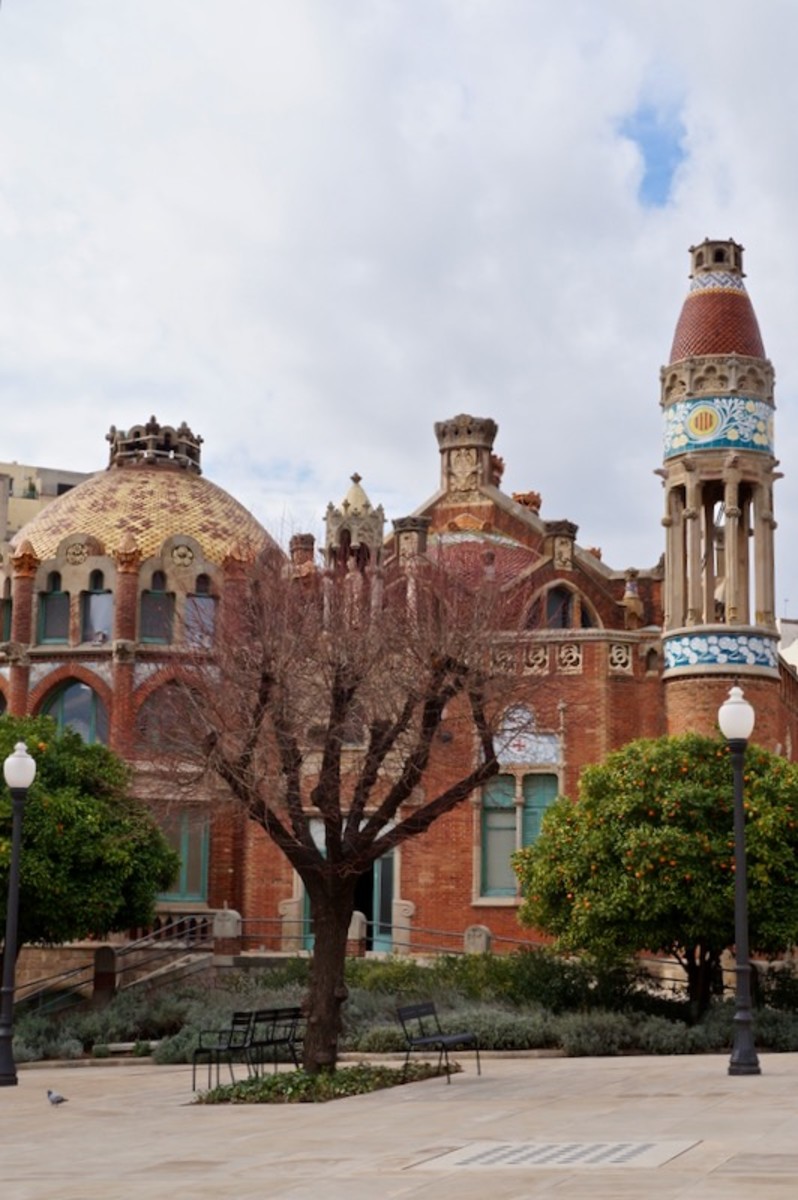Lanzarote - Canary Islands Spain - A Travellers Tale
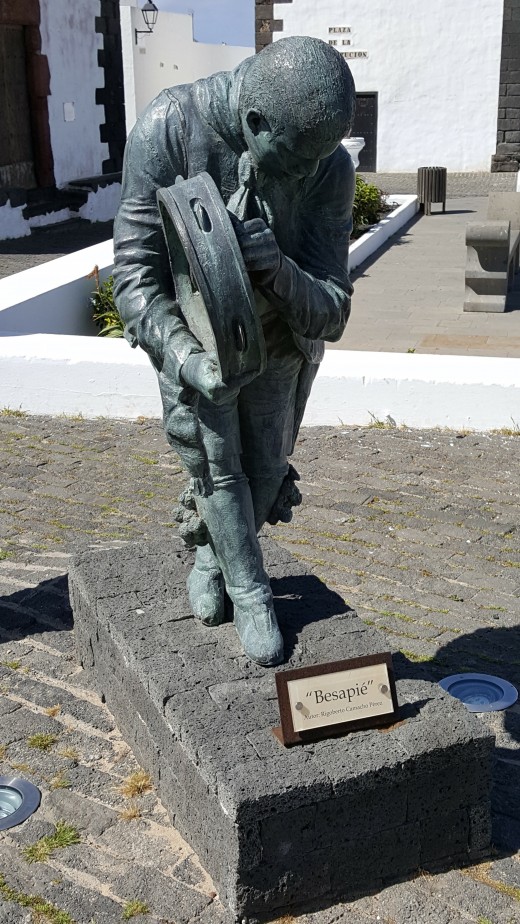
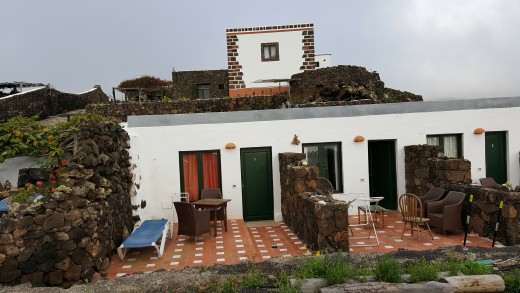
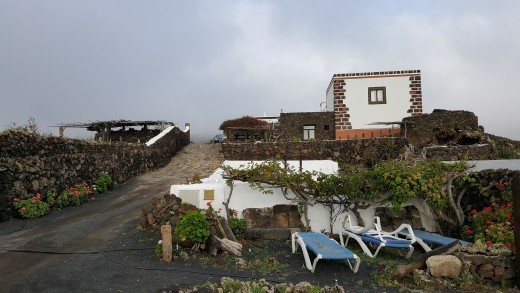
Day 1 – March 1st 2017
I left home in the early morning as was usual for my holiday breaks in Europe, although I was not worried as I was able to play with my new car, which I had just bought earlier that day. At 04.00 I reached the APH car park near Birmingham airport and boarded the bus that would take me to the airport. My Ryan Air flight FR1448 left Birmingham on time at 06:45 and after an uneventful four hours arrived in sunny Lanzarote at 11:00.
After customs, I went to the GoldCar desk to pick up my rental, a nice red coloured Hyundai C10 and started my 45-kilometre journey to my apartment in the north of the island.
My Finca was situated in the province of Ye and called El Cartijo Eco-Finca. As I journeyed north, the sky turned from blue to light fluffy clouds to dark overbearing clouds and the wind started blowing quite hard. The first impression of the accommodation was good - the Finca looked very traditional and was set in acres of farmland and it was obviously a working Finca. I was shown to my apartment, which was 100 yds from the main building and one of six apartments set into the side of the hill. The accommodation was a living room with a makeshift kitchen on one side, a bathroom and a bedroom. After unpacking I decided to visit the closest town to get some provisions for breakfast, the odd cup of tea and an evening meal as I was too tired to look for a restaurant.
The nearest town was Orzola about a ten-minute drive from the accommodation and it had one small supermarket with minimal choice. Orzola is a village in the municipality of Haría in the Las Palmas province of northern Lanzarote. It is the departure point for the ferry to La Graciosa, a small island just off the north-west coast. However, I managed to get something reasonable for an evening meal and headed back to the apartment. Once there I started to realize that things would not be plain sailing. Firstly, although there was a small gas hob there was no kettle to boil water. In fact, contrary to the description of the amenities available through the booking agency, there was a big deficit. The description had included a hairdryer, fridge, and kettle, all of which were not present. What was there in the form of cutlery, dishes and pots and pans was extremely sparse. The other problem was that it was cold in the apartment as there was no heating and everything was feeling damp including the bed sheets and covers. The only thing that worked was the hot water boiler enabling me to have a hot shower. I slept with some clothes on as it was so damp and cold under all the available blankets and bed covers.
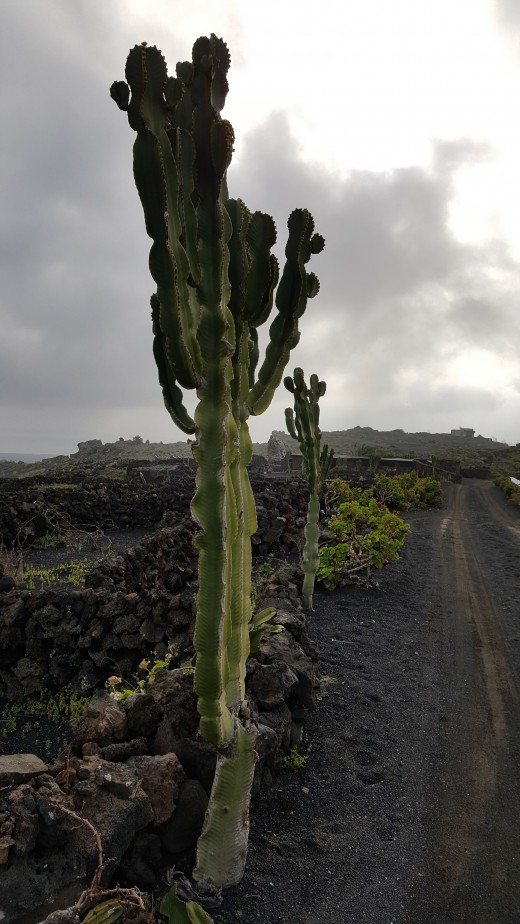
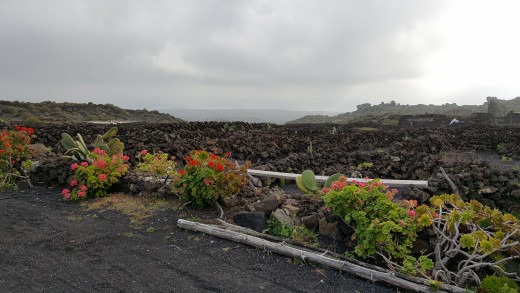
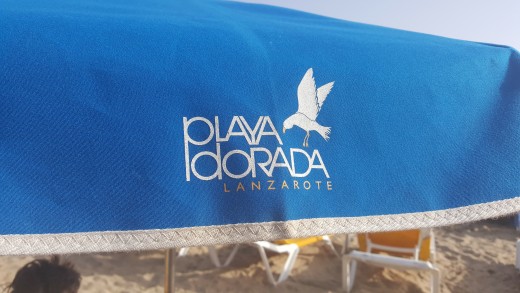
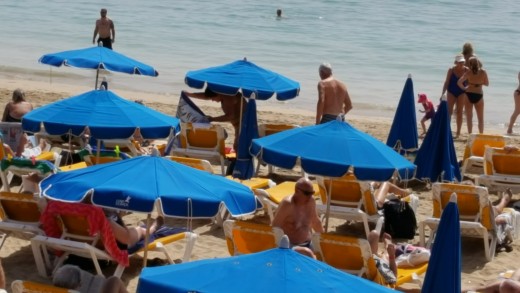

Day 2 – March 2nd 2017
I awoke to a cold, cloudy day and decided during the sparse breakfast to head south into the sunshine. So, after depositing the dairy produce into the only fridge on the Finca, which was up in the kitchen of the main farmhouse, I headed south. One thing I had to find was a bank as the owner did not take credit cards and insisted on cash. So I headed for a small town called Haria. The town was very pretty and once I had managed to circumnavigate the one-way system I found a bank and parked the car. After drawing out the funds from the ATM I decided to walk around the town and take photographs.
After the walk, I set off down towards the south on the road to Playa Dorado, which is on the south coast of the island and much more sunny and warm than the north. I arrived dying for a coffee and quickly found a coffee and snack bar called The Jungle where I had a café con leche. Once satiated I headed for the beach where I rented a sunbed for the remainder of the afternoon. With only a short break for lunch, I stayed on the beach until five o’clock in the afternoon before heading back north to the terrible apartment.
That evening I drove into Orzola the town I had shopped at the night before and had dinner at a very nice restaurant called S Gallegos. The food was excellent here.
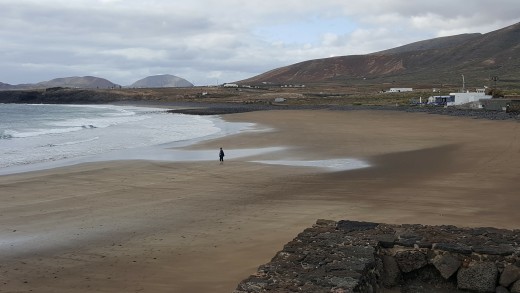
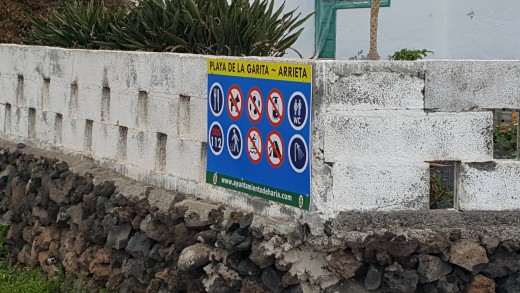
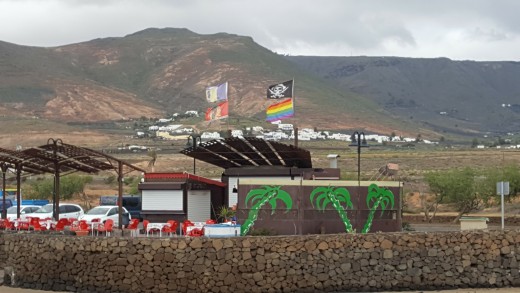
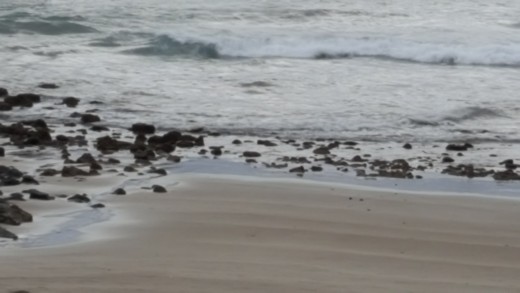
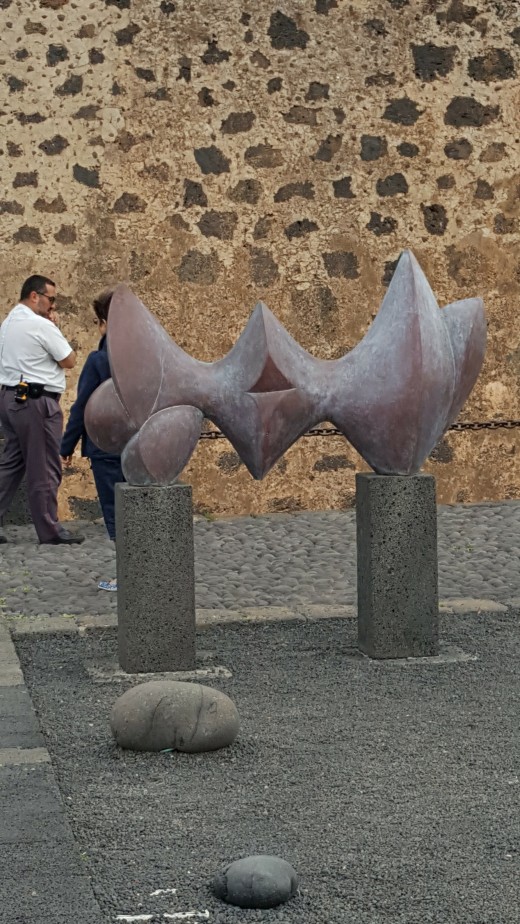
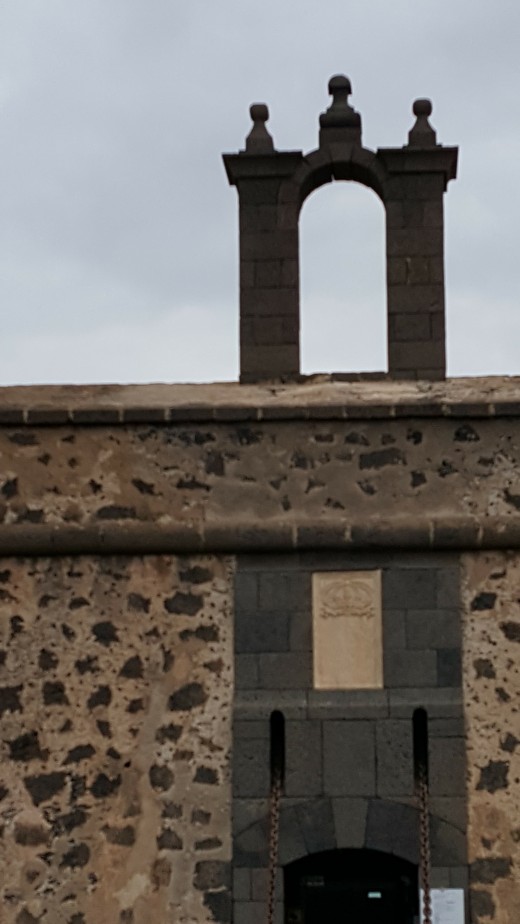
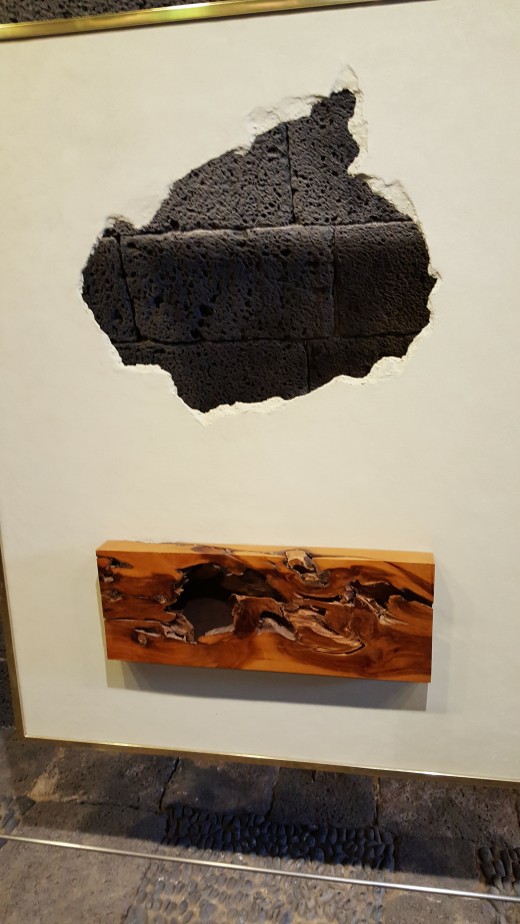
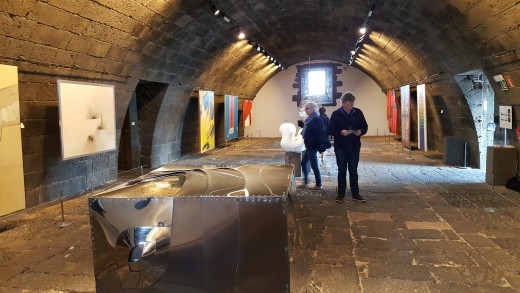
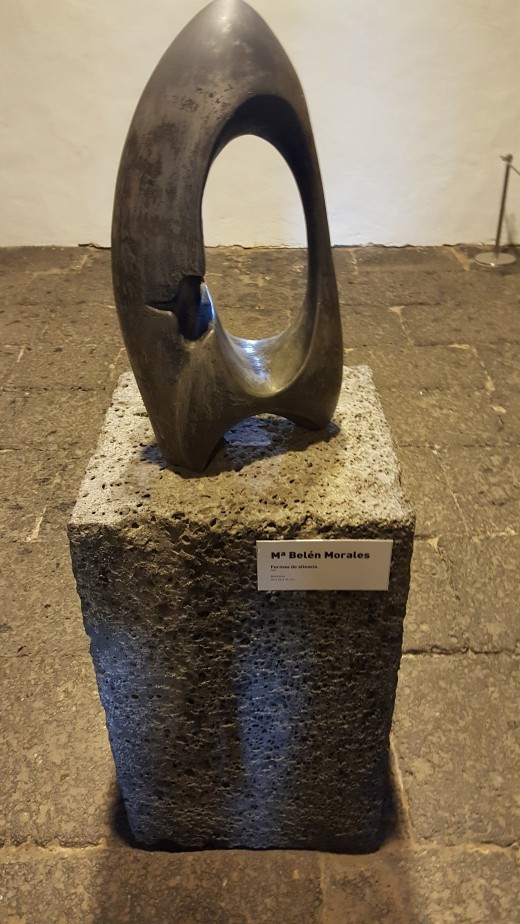
Day 3 – March 3rd 2017
After a cold and damp night, I awoke had a quick breakfast then decided to ask the owner to switch me into an apartment in the main building. I figured it would be warmer and not damp. Not so! The apartment they gave me was only a little less damp and musty but as the hot water was dependent on solar power and this end of the island was cloudy most of the time I did not have hot water for showering at all. In addition, you could literally write your name in the layer of dust covering every piece of furniture. The electricity was erratic and you would suddenly find yourself unexpectedly plunged into darkness – I bought candles and a lighter to be on the safe side. The bed was a lovely old wooden four-poster and would look fantastic in photos. The reality was that unless two occupants carefully co-ordinated their climb onto the bed you were likely to be catapulted off or alternately deposited on the floor – depending on which side you approached the bed. It reminded me of the cash register in ‘Open All Hours’ – you could never tell in what way it was likely to attack you.
I was dying for a coffee so decided to visit a small seaside town on the east coast called Arrieta. There I had a coffee and croissant before taking a stroll on its only beach Playa de la Garita. This beach was black volcanic sand and looked as though the tide had left it wet but that was not the case it was an illusion and come to think of it I didn’t see much tide movement around the island at all. The beach is popular with surfers and it seemed that everyone was under thirty and had a surfboard.
After visiting Arrieta I headed for the capital Arrecife to visit the Castillo San Jose, built between 1776 and 1779 on the orders of the Spanish King Carlos III, the construction of this appealing semi-circular fortress served at that time – apart from the military purpose – predominantly to provide work for the islanders. This was a tough time with many people struggling to find a living following the volcanic eruptions earlier in the century, which had devastated the island, especially the fertile land. This is also the reason why this fortress became known as the Fortaleza del Hambre (Hunger Fortress).
Its commanding position on a clifftop overlooking the sea made the Castillo de San José vital to the defence of the island’s capital and its port against the many pirate raids, which all the Canary Islands were exposed to at the time.
When its defensive purpose became less important, it was then abandoned for almost one hundred years and by the 20th century, the fortress had started to decay. Enter César Manrique who convinced the town authorities to transform the castle into an art gallery and the Museo Internacional de Arte Contemporáneo (Contemporary Art Museum) which opened in 1976. The abstract art collection put together by Manrique includes works by Picasso, Tàpies, Miró, Mompó, Millares, and Manrique himself, along with modern sculptures, many of which can be seen outside the entrance. Recitals of chamber and modern music take place on a regular basis in a purpose-designed concert hall. Manrique’s own contribution to this place is a stylish restaurant and bar. The entire front is occupied by a panoramic window overlooking the busy Puerto de los Mármoles harbour.
Recently a stunning set of new sculptures, entitled The Rising Tide, has been sited in the bay at Puerto Naos in the waters outside the Castillo de San Jose. In an obvious reference to the apocalypse, the work comprises four horsemen, the necks of their mounts are shaped to resemble the machinery used by oil companies to extract this natural resource. They have been created especially by the British eco sculptor Jason de Caires Taylor, who is the brains behind the much-anticipated Museo de Atlantico which opened in the sea off Playa Blanca in January 2017. These new works carry a similar, powerful message about the preservation of our planet in the face of globalization and the rampant pursuit of profit by multi-national companies.
After visiting Castillo de San Jose I drove to the windsurfing centre of Lanzarote at Costa Teguise, a small seaside resort on the east coast just north of the capital. The town was full of apartment blocks and hotels but as with the rest of the island Cesar Manrique’s influence to build no higher than three stories is evident in this town. After a lunch and a beer at the Bucchus I found a nice spot on the beach overlooking the bay where the windsurfers did their thing showing off their skills in the high winds. As the sun was warm I spent the rest of the afternoon sunning myself and watching the windsurfers.
That evening I went back to Orzola and ate at Charco Viejo a different restaurant to the previous evening where the food was not as good as S Gallegos.
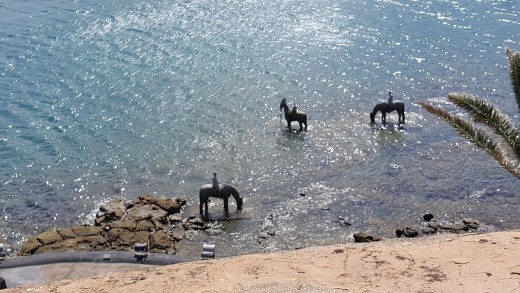
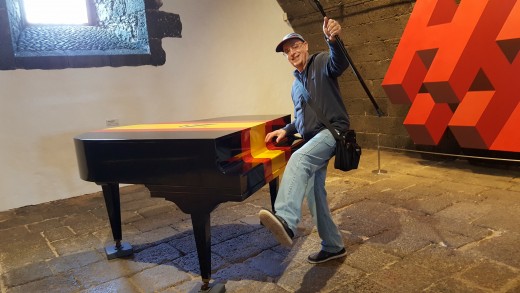
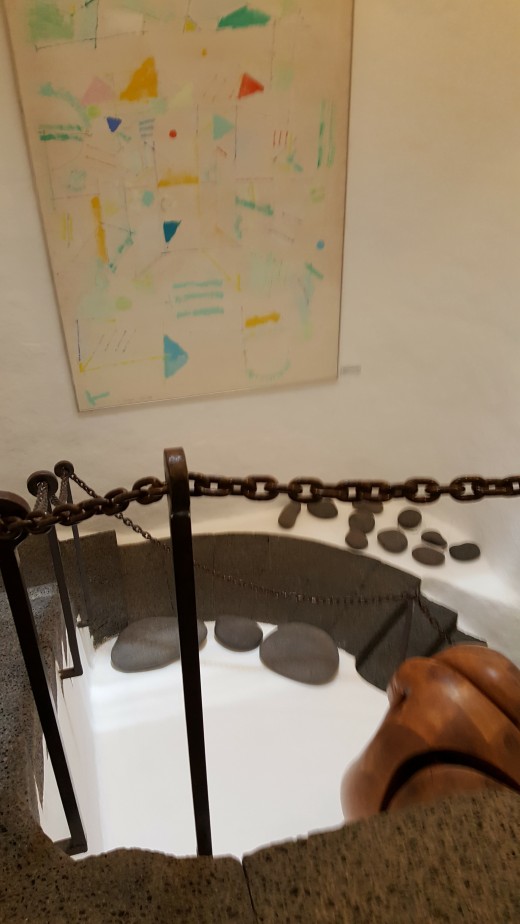

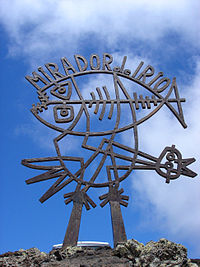
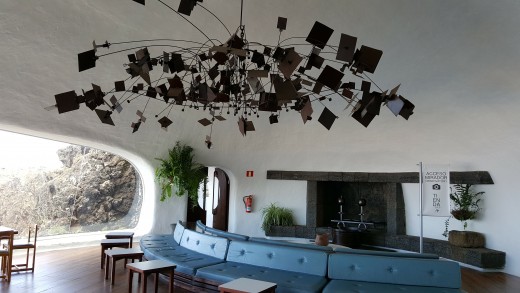
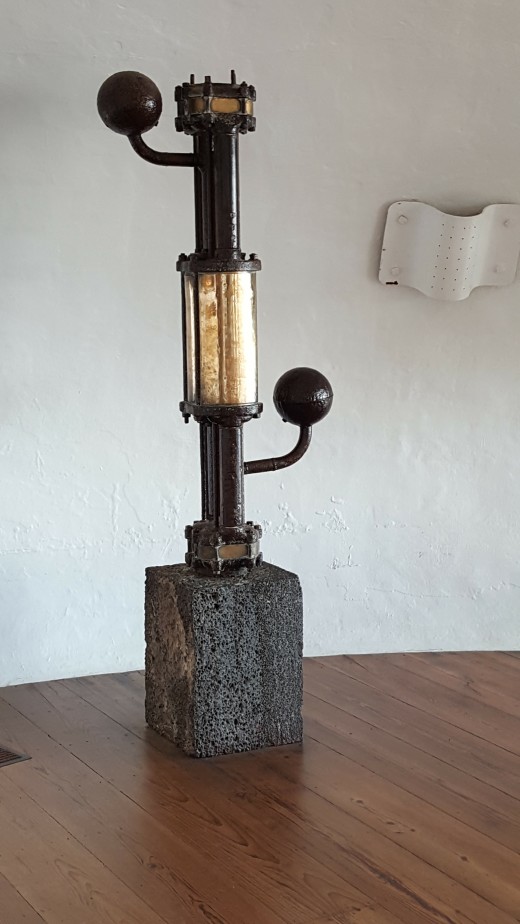
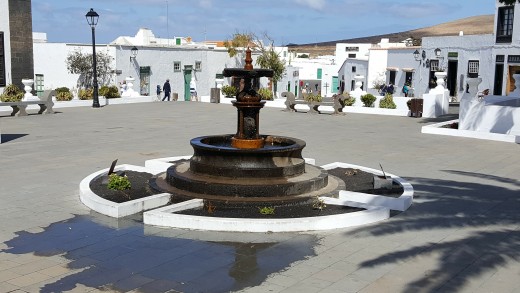
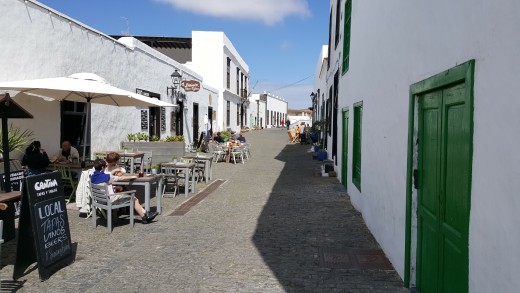
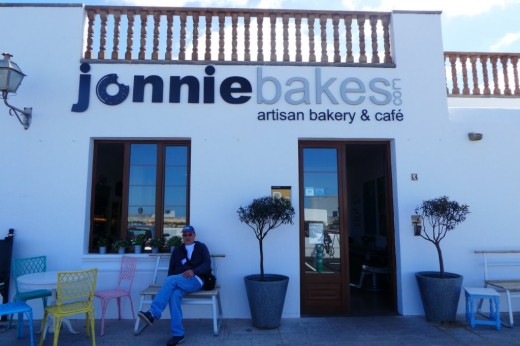
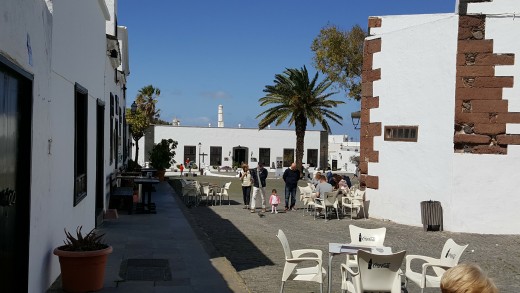
Day 4 – March 4th 2017
After a really cold night, I started to mull over whether I should cut my losses and move to another accommodation further south on the island. I decided to mull it over during the course of the day. Today I planned to visit one of Cesar Manrique’s more spectacular and magnificent creations, the Mirador del Rio on the north-west end of the island. It is a viewpoint and café embedded into the top of a 475-meter-high cliff. The location was created in 1974 by the local artist César Manrique in his typical style, consisting of a balustraded cafe, a souvenir shop and a platform on its top which are integrated into the lava rock. The building has the peculiarity that is barely visible from the outside thanks to a subtle and ingenious camouflage maneuver of hiding its structure under a heavy volcanic stone skin that blends in with the environment.
After accessing inside the building through a winding corridor, there are two spacious vaulted rooms with two large glass windows—the eyes of the Mirador—that allow contemplating an extraordinary panoramic view over the strait of "Río" (naming the viewpoint) towards the archaic island of La Graciosa. Also, on clear days, beyond the view of La Graciosa, the small islands Montana Clara and Roque del Oeste can be seen, with the furthest of them all being Alegranza. From here guards watched for secretly landing ships in older times.
I enjoyed a coffee and croissant after walking around the art exhibition and taking photographs of the views and items of art.
I then drove down south to the old capital of Lanzarote, the delightful small quaint town of Teguise. The town was founded in 1414 and served as the capital of the Kingdom of the Canary Islands from 1425 to 1448 and as the capital of the island until the capital moved to Arrecife in 1852. A market is held in the town on Sunday mornings and has become a popular tourist attraction. I walked around taking photographs for a while before succumbing to a coffee break and found this wonderful little café called Johnnie Bakes. Owned by a married gay couple Johnnie, a Mancunian and Mike from Vancouver in Canada, Jonnie bakes the most glorious cakes you could imagine. Fresh every day. They also served snacks that catered for vegetarian, vegan and carnivore palettes. It was a lovely place and I spent some time talking to both Jonnie and his father who also lived on the island.
After our coffee come lunch I headed back to our accommodation. I dreaded going back and so decided to look for better accommodation elsewhere on the island. I drove to Costa Teguise, which was a seaside resort I had visited the day before and had liked. Stopping at Café Toledo in the centre of the resort I searched for accommodation on the internet. I found an apartment complex which I liked and which was not far from the café. The apartments were called Lanzarote Paradise and as luck would have it they had a family apartment available at the same price as a double apartment for the three nights I required. I booked and headed back to the accommodation in a better mood knowing it was my last night there.
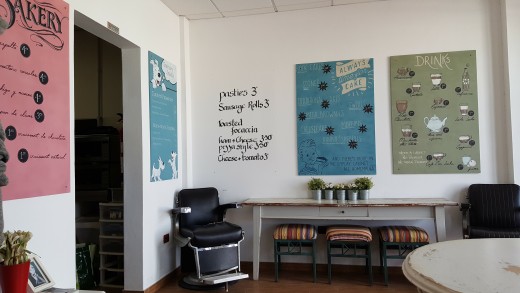
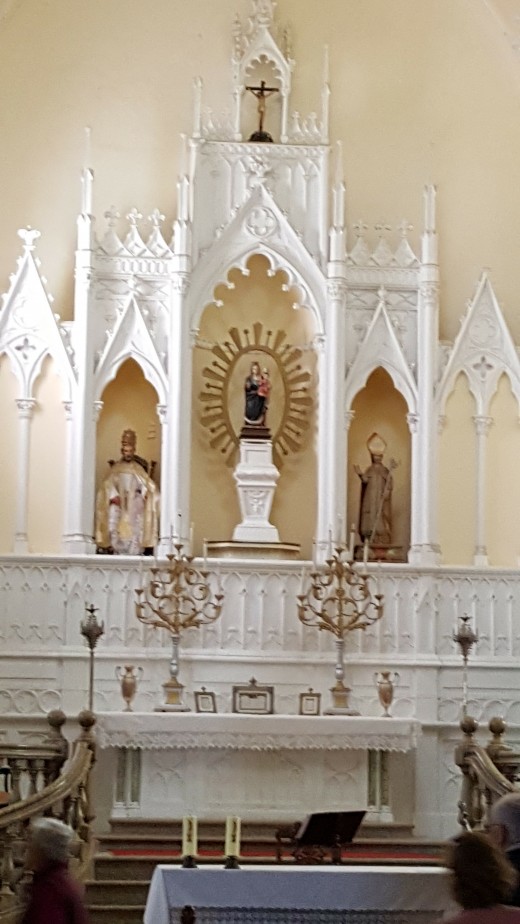
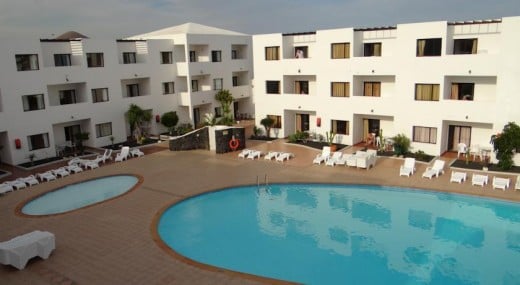
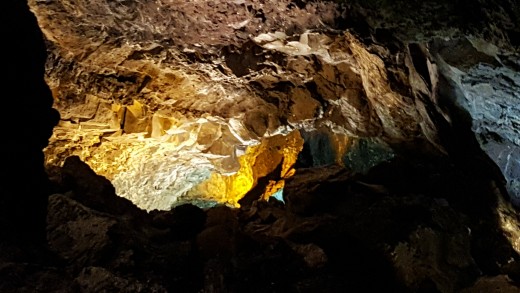
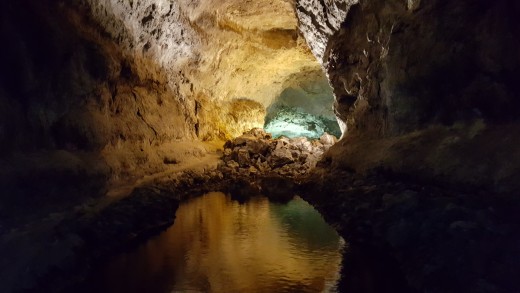
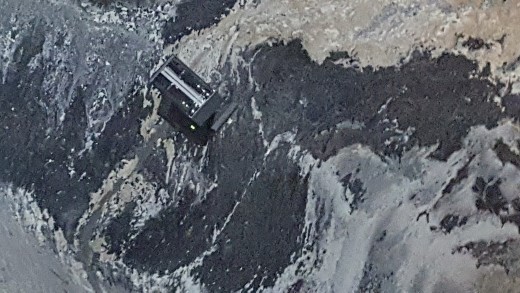
Day 5 – March 5th 2017
After a quick breakfast in the dusty kitchen in the main farmhouse I quickly packed and set off south for the remainder of the holiday. Before leaving the north of the island I decided to visit the Cueva de Los Verdes (the green caves) which were situated only fifteen kilometres south of the accommodation. One of the lengthiest volcanic tunnels in the world, the Cueva de Los Verdes has been protecting locals on Lanzarote for hundreds of years from bandits and pirates and of late delighting visitors since it opened to the public in 1964. The Cuevas de Los Verdes are part of a six km long lava tube, moulded about 4,000 years ago, when the Montaña La Corona erupted. Since 1964 a two km pathway has been opened which shows off the caves to their best effect. Unlike most tourist attractions and due to the input of Lanzarote artist Jesus Soto, it is hard to tell that there has been any human involvement in the cave structure. The key work has gone into a breath-taking lighting and sound system which highlights the walls of the cave amazingly well. We joined one of the tours which lasted about 45 minutes as the guide led the tour party down 40 metres to the tunnel floor and then guided us through 2 kilometres of pathways, some narrow, some wide and some very low. Since rupturing my Achilles tendon this was the furthest I had walked particularly over rough ground and the guide kindly said I could walk with him so that he could warn and help me on any difficult sections.
After these amazing caves, I drove to our new accommodation and checked in before eating lunch in the snack bar by the pool. I then went down to the promenade of Costa Teguise and watched the windsurfers do their stuff. I decided to eat in and got together salad and cheese etc for a couple of nights.
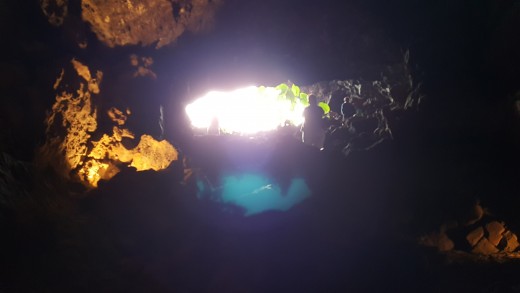
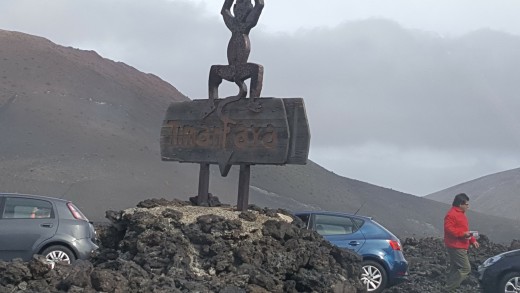
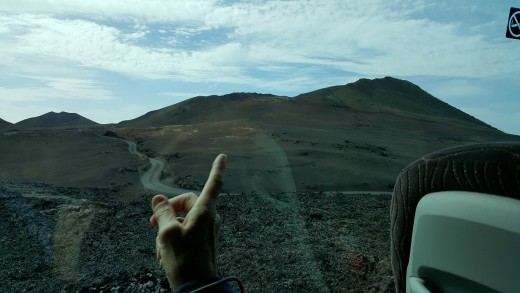
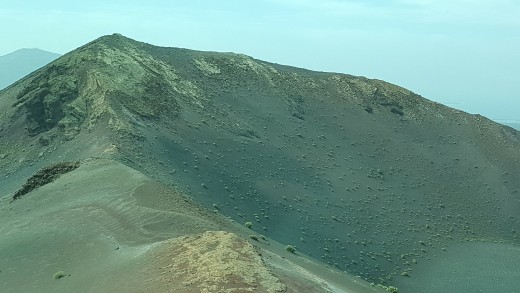
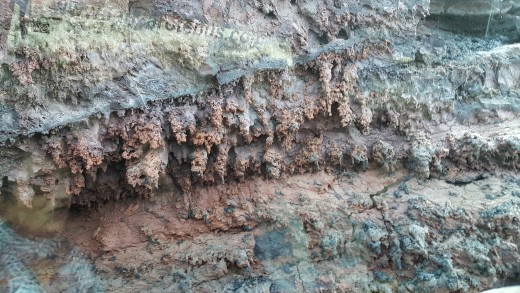
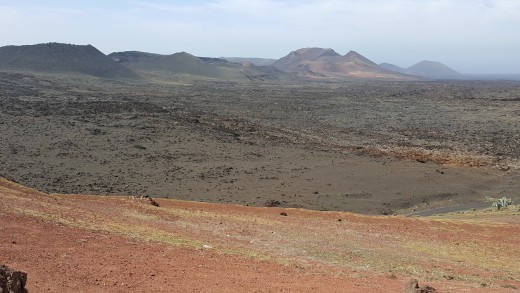
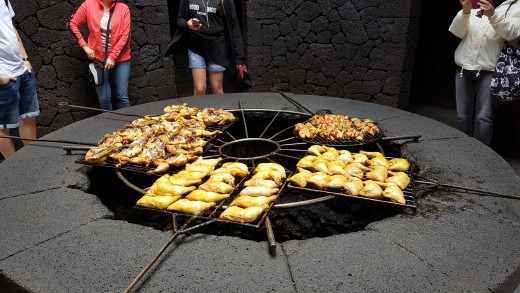
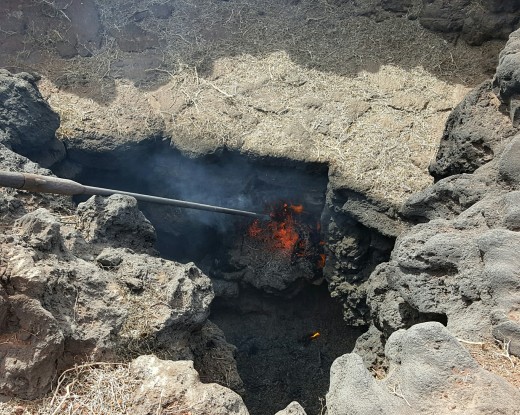
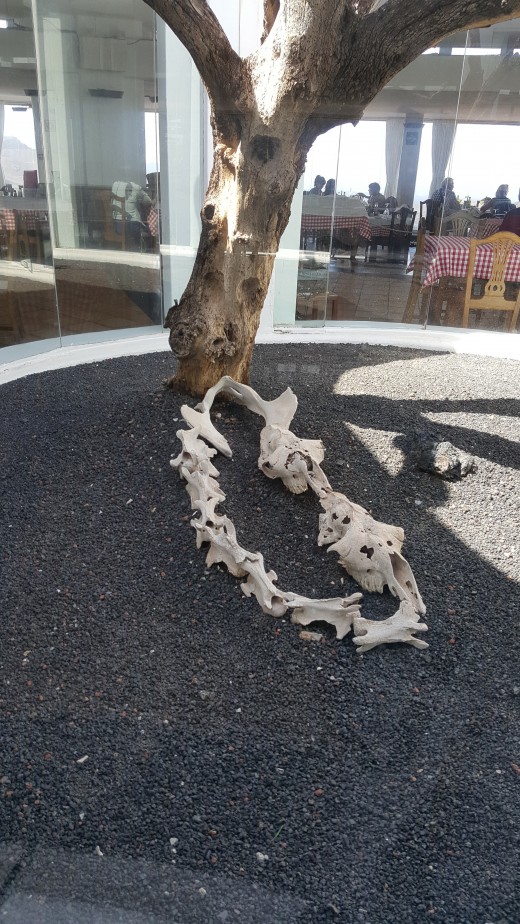
Day 6 – March 6th 2017
After breakfast, I headed down to the southwestern corner of the island towards the site that I had been looking forward to all week. The Timanfaya National Park and the lava fields. The entrance to the park is marked by the mischievous logo designed by Cesar Manrique called El Diablo or in other words The Devil. Just beyond the sign is the camel park where dozens of camels await tourists who are interested in travelling around the outer reaches of the national park on a very unsteady mount. The journey takes about 20 minutes. There is a museum near the camel station, which exhibits all the various types of lava rock samples from the area. The museum is named after the village of Rocas, which was one of the eleven villages buried by lava and ash during one of the 1700’s many volcanic eruptions. The landscape around The Timanfaya National Park resembles a moonscape of multi-coloured volcanic rocks, which comprises over fifty-one square kilometres. It covers most of the north-west coast of the island and is totally devoid of plant, bird and animal life. This area was devastated during a six-year period in the 18th century when over thirty volcanoes erupted and spread huge amounts of magma onto the immediate and far landscape. After two hundred and fifty years, there is still very little vegetation anywhere. It’s still fairly safe but underneath the surface, the volcanoes are still bubbling and the smell of sulphur is prominent in the air.
The Timanfaya National Park can only be visited through coach tours or guided walks. Walking alone without a guide is strictly forbidden. The coach tour takes forty minutes and takes you along a ten-kilometre route giving tourists views of volcanic cones, craters, lava tubes and dunes of lapilli. Although the coach stopped several times for photograph opportunities, we were not allowed out of the coach at any point. Throughout the trip, we were accompanied by the menacing five hundred and ten metres high black mountain of Islote de Hilario the highest of all the Fire Mountains. After the coach trip, I visited the El Diablo (Devil) Restaurant where I was shown the barbeque that uses geothermal heat from four thousand feet below the surface to cook food placed on a cast iron grill over a hole in the ground. Again, a Cesar Manrique influence, as is the restaurant and viewing platform that he designed and which blends into the landscape beautifully. Staff also demonstrate the power of the intense heat just below the surface of the earth by pouring water down small holes when suddenly a loud whoosh is heard and white-hot steam shoots into the air. If you p[lace your arm into one of the cavities in the wall you can feel the heat permeating through the volcanic rock.
After this amazing trip, I headed towards the south coast to Los Hervideros where there is a maze of caves in the cliffs at sea level and where the sea thunders in and spumes water up through the caves to the surface. A series of walkways and lookout points have been built for tourists to safely enjoy this natural phenomenon.
After this, I travelled further along the coast to El Golfo where a small lake has formed at the bottom of the cliffs which has minerals from the magma and lava fields which give it a green colour and provides a sharp contrast between it and the sea a few feet away. Here I had a coffee and something to eat before heading back tired but satiated from the excursions to my apartment in Costa Teguise.
Does this hub make you want to visit Lanzarote?
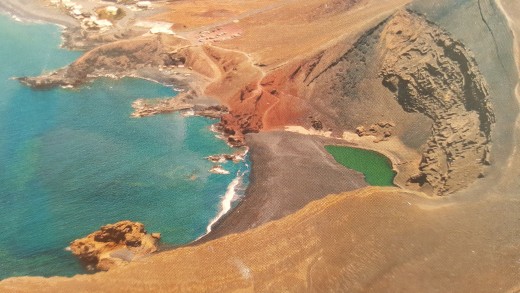
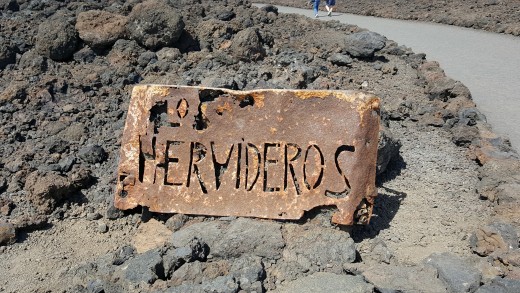
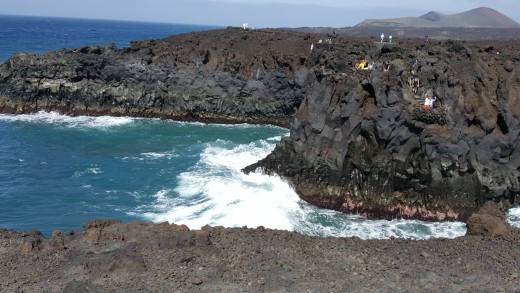
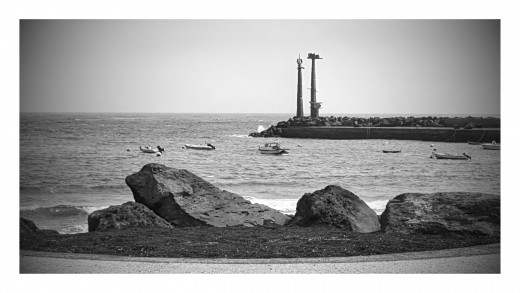
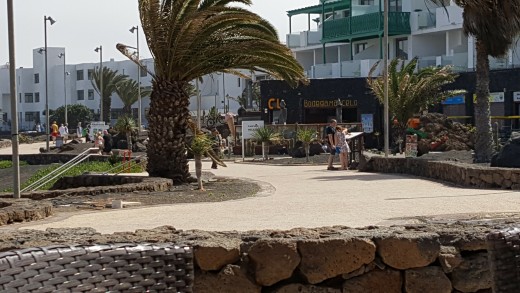
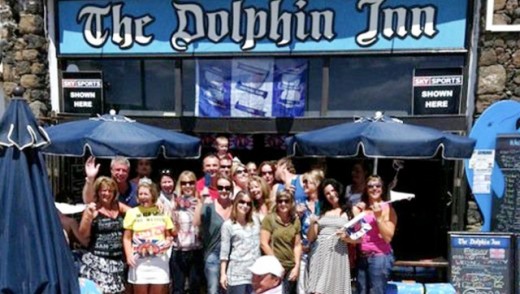
Day 7 – March 7th 2017
As today was my last day and I had visited all the places of interest I had planned to on the island, I decided to stay at Costa Teguise and spend the day on the seafront. It was a chance also to walk the front, which I hadn’t done before. It was very windy and so I had to find a place out of the wind for my morning coffee. After which I found a protected stone bench overlooking the sea where I was out of the wind but in the sun. Here I read and took some sun until after midday when I looked for a nice place for lunch. I found a delightful place called Dolphin Inn where the waitress (Heidi) was English and the food turned out to be very good and the portions big. Well worth the money.
After lunch, I headed to the beach area where the windsurfers were attempting to stay upright in what was a very strong wind. Here I stayed all afternoon enjoying the sun and making sure I was out of the strongest of the wind. As it was windy I decided to eat my evening meal back at the restaurant at the apartments and not go out again.
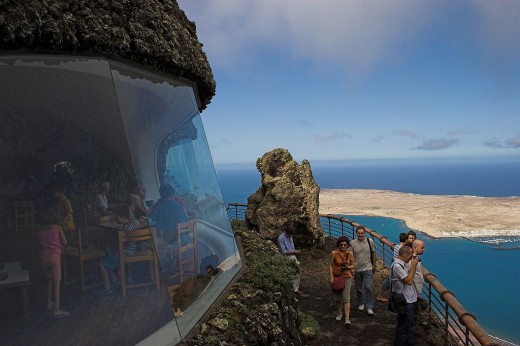
Day 8 – March 8th 2017
I checked out at 08:30 am and drove to the airport to deposit the car rental and catch the Ryanair flight back to Birmingham from Arrecife airport. The flight had been delayed due to French air traffic controllers so I arrived back in the UK forty-five minutes later than scheduled. During the flight over France, our plane was involved in a near-miss as another plane passed us in the opposite direction at our level and only five hundred feet from us. A classic near miss, which a day or two after we got back was published as a near miss on the CAA site. An interesting end to my vacation.
